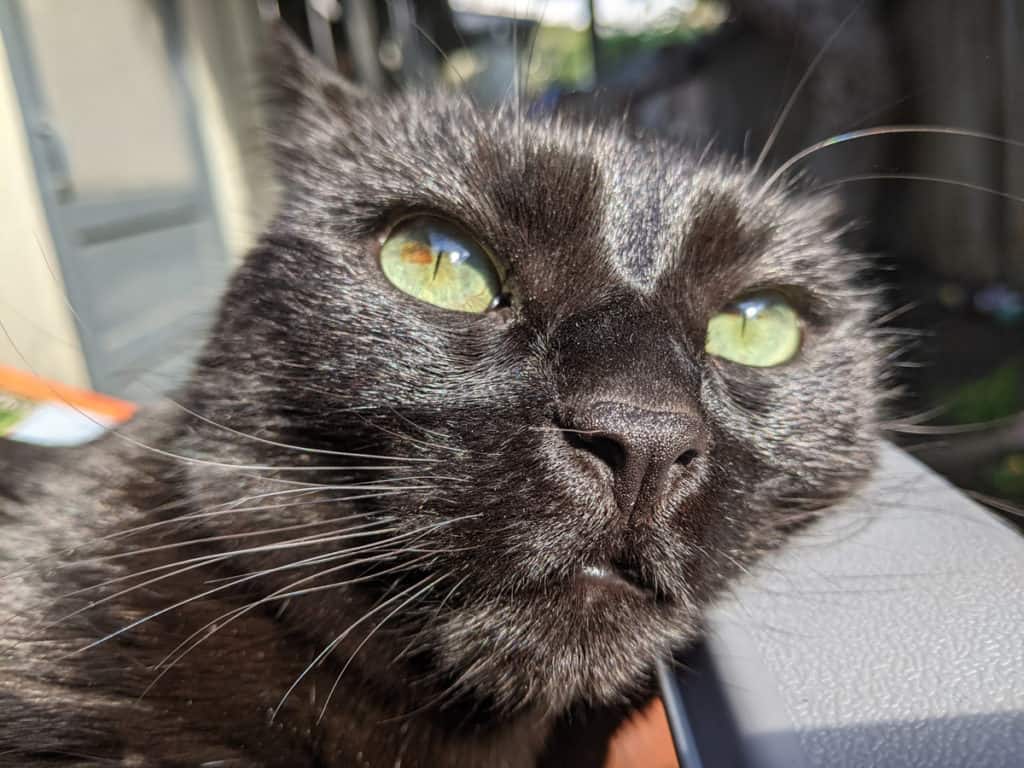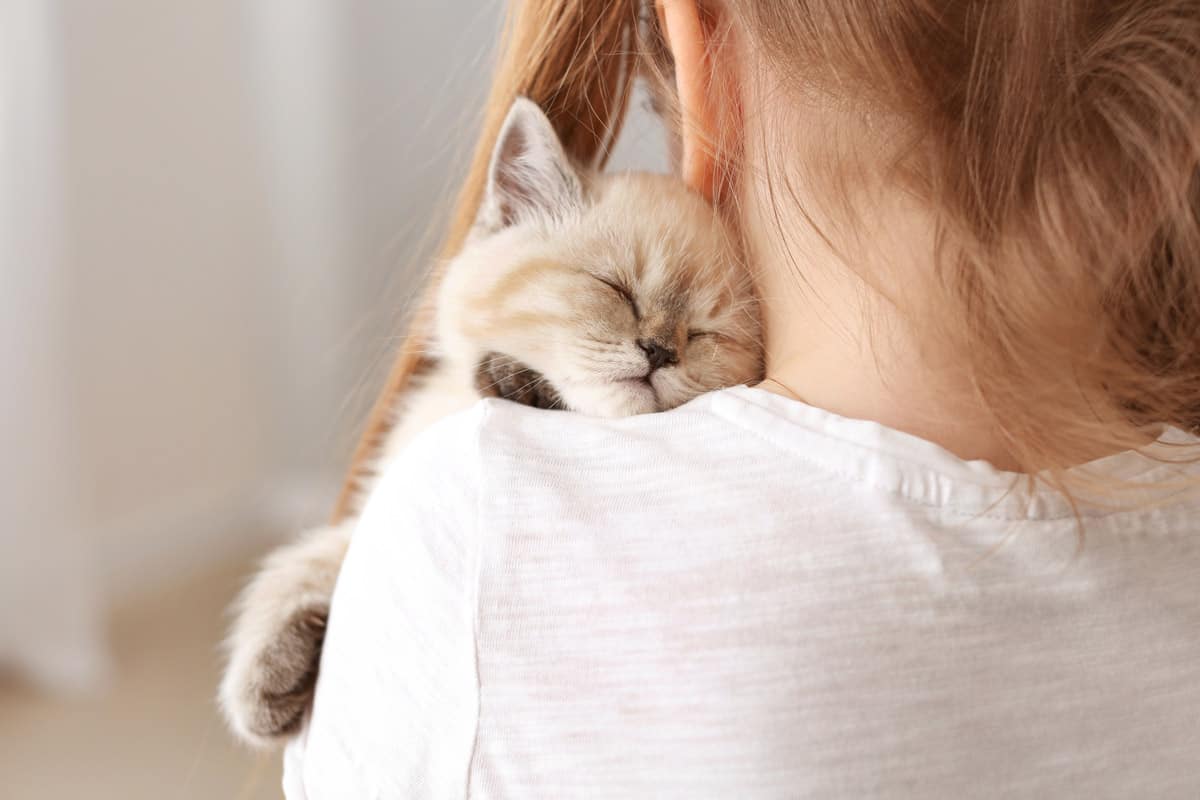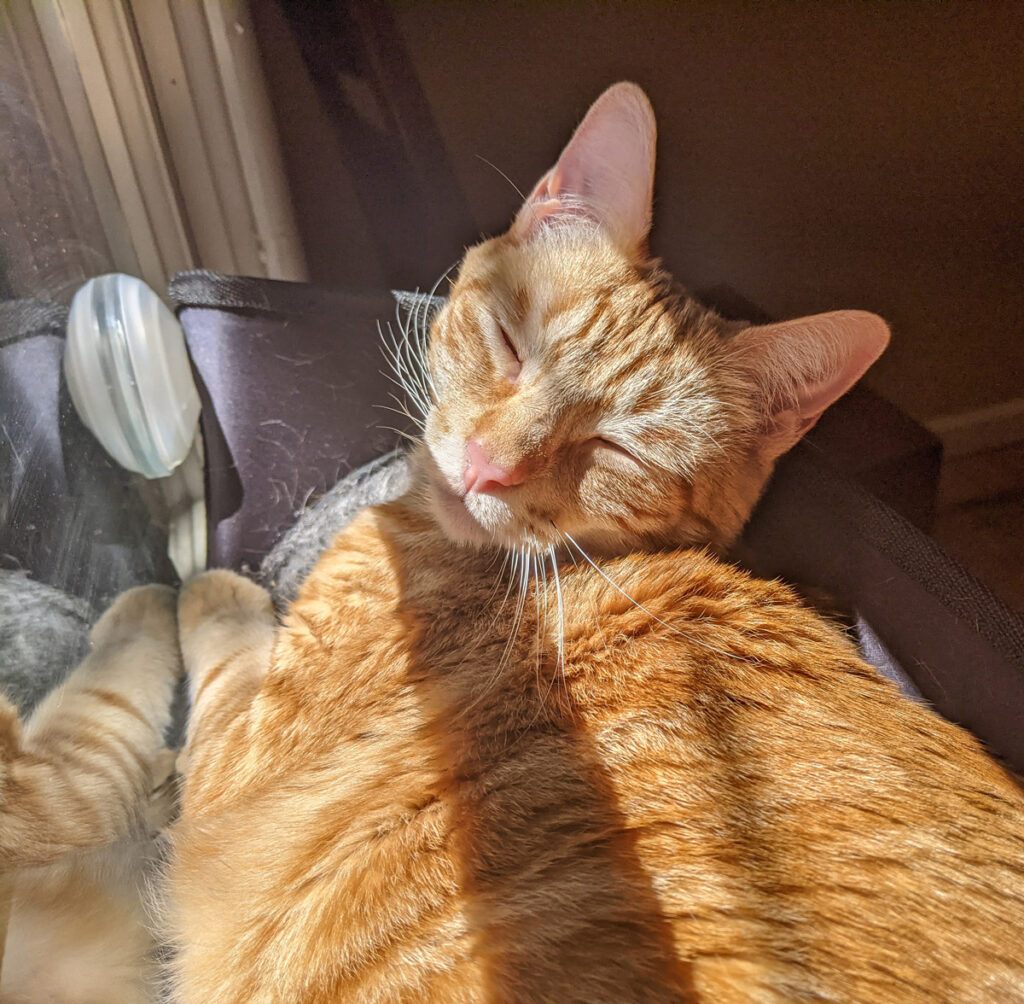Why do cats love to be warm? My black cat likes to bake herself in the hot sunlight during the summer months. During the winter months, we have cat beds set up next to the air vents so our cats can enjoy snoozing next to the flow of warm air from the heater.
Cats are known for their love of warmth and cozy spaces. As descendants of desert-dwelling animals, felines have evolved to be comfortable in warmer temperatures.
That said, it is important to understand that not all cats share the same temperature preferences. The ideal temperature for your cat may depend on factors such as breed, age, and health.

The Temperature Most Cats Prefer
Cats have a higher normal body temperature range than humans: 99 to 102.5 degrees Fahrenheit (37.2 to 39.2 degrees Celsius).
Cats also have a high thermoneutral zone (TNZ). The thermoneutral zone (TNZ) is the temperature range in which an animal can comfortably maintain its normal body temperature without expending additional energy for thermoregulation.
For cats, the thermoneutral zone is generally between 86 and 95 degrees Fahrenheit (30 and 35 degrees Celsius). Within this range, cats can maintain their body temperature without needing to shiver to produce heat or pant to dissipate heat. However, it is essential to note that individual preferences and factors like breed, age, and health can influence a cat’s thermoneutral zone.
So, when the ambient air temperature falls below this range, cats need to expend energy to maintain their body temperatures.
The TNZ for cats is higher than the air temperature most humans find comfortable, which is typically around 68 to 72 degrees Fahrenheit (20 to 22 degrees Celsius).
However, individual preferences may vary among cats, and it is essential to observe your cat’s behavior to determine the ideal temperature for them.
Factors Influencing a Cat’s Temperature Preference
Breed
Some cat breeds are more adapted to specific climates due to the characteristics of their fur. For example, Siamese cats have short, sleek coats, which make them more comfortable in warmer temperatures.
In contrast, long-haired breeds like the Siberian or Maine Coon are better suited for cooler environments due to their thick, insulating coats.
Age
Young kittens and elderly cats may be more sensitive to temperature changes. Kittens, in particular, may require a slightly warmer environment as they are still developing their ability to regulate body temperature.

On the other hand, senior cats may have difficulty maintaining their body heat due to age-related health issues, and they may prefer a warmer environment as well.
Health
Cats with certain health conditions, such as arthritis or other joint issues, may find warmth more soothing and may prefer a slightly higher temperature. Cats with compromised immune systems may benefit from a warmer environment, as this can help them better combat infections.
Tips for Maintaining a Comfortable Temperature for Your Cat
Provide warm and cool spaces
To accommodate your cat’s temperature preferences, offer a variety of resting spots in your home with different temperature levels.

This could include placing a cat bed near a sunny window or a heating pad for warmth, and providing a cool tile or hardwood floor surface for them to lie on when they feel too warm.
Observe your cat’s behavior
Pay attention to where your cat chooses to rest and how they behave. If they are frequently seeking out warm spots or curling up in tight spaces, they may be trying to stay warm. Conversely, if they are stretching out on cool surfaces or seeking out areas with air circulation, they may be too warm.
Adjust your home’s thermostat
If you notice that your cat appears uncomfortable, try adjusting your thermostat within the general range of 70 to 80 degrees Fahrenheit (21 to 27 degrees Celsius) to find the temperature that best suits your cat’s needs. Be sure to monitor your cat’s behavior to determine whether the adjustment is helpful.
Use self-heating cat beds
If your cat enjoys warmth, consider providing a self-heating cat bed (affiliate link) in their favorite resting spot. These beds use the body heat from the cat to create a cozy and warm space to rest.
Disclaimer: Explore Cats is a participant in the Amazon Services LLC Associates Program, an affiliate advertising program designed to provide a means for sites to earn advertising fees by advertising and linking to amazon.com.
Ensure proper ventilation
In warmer months, it is important to provide adequate ventilation to prevent your cat from overheating. Open windows, use fans, or turn on the air conditioning to maintain a comfortable temperature for your cat.
Monitor outdoor temperatures
If your cat spends time outdoors, be aware of the temperature and weather conditions. During hot summer days, provide shade and fresh water for your cat, and consider bringing them inside during the hottest parts of the day.

Conversely, during cold winter months, ensure your cat has access to a warm and sheltered area, and limit their time outside to prevent them from getting too cold.
Regularly groom your cat
Grooming is essential to help maintain your cat’s coat, which plays a significant role in temperature regulation. Regular brushing can help remove loose hair and prevent matting, allowing for better air circulation and insulation.
This is especially important for long-haired breeds that may be more prone to overheating or feeling cold due to their thick coats.
Consult your veterinarian
If you have concerns about your cat’s comfort or health related to temperature, consult your veterinarian. They can provide guidance on the ideal temperature range for your cat based on their specific needs and may recommend adjustments to their living environment or medical treatment if necessary.
References
Hill, R. C., & Scott, K. C. (2004). Energy requirements and body surface area of cats and dogs. Journal of the American Veterinary Medical Association, 225(5), 689-694. https://doi.org/10.2460/javma.2004.225.689







